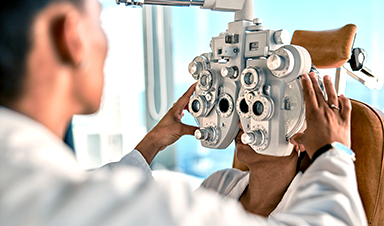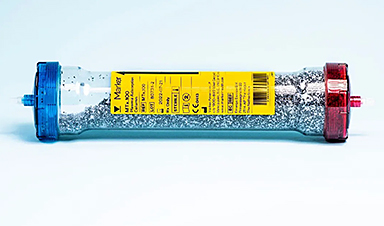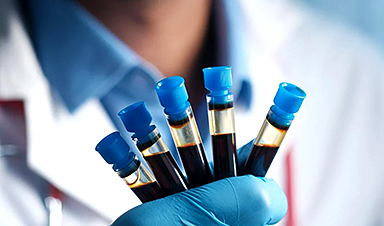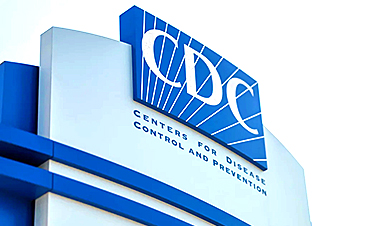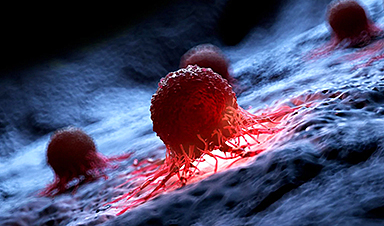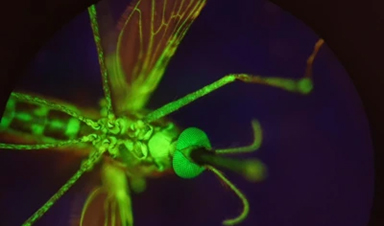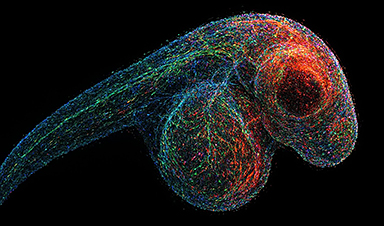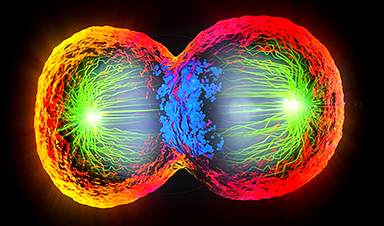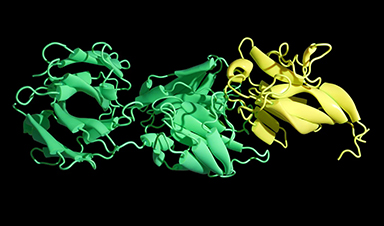Scientists discover that even mild COVID-19 can alter brain proteins linked to Alzheimer’s disease, potentially increasing dementia risk—raising urgent public health concerns.
A recent study published in the journal Nature Medicine investigated whether both mild and severe cases of severe acute respiratory syndrome coronavirus 2 (SARS-CoV-2) infection are linked to changes in brain biomarkers associated with Alzheimer’s disease.
By analyzing blood samples from the United Kingdom (U.K.) Biobank participants, the researchers found that individuals who had COVID-19 showed signs of increased brain pathology, raising critical public health concerns.
Background
As the world continues to recover from the COVID-19 pandemic, scientists are investigating its long-term effects on brain health. Past research has shown that viral infections can trigger systemic inflammation, a key factor in neurodegenerative diseases such as Alzheimer’s disease. Emerging evidence suggests that people who have had severe COVID-19 may be at a higher risk of cognitive decline, but the underlying mechanisms remain unclear.
Alzheimer’s disease is associated with changes in brain proteins such as beta-amyloid and tau, which can be detected in blood samples years before disease symptoms appear. Biomarkers such as amyloid-beta ratio (Aβ42:Aβ40), phosphorylated tau (pTau-181), and neurofilament light chain (NfL) help researchers assess early signs of neurodegeneration.
However, previous studies have focused mainly on severe COVID-19 cases, leaving a gap in understanding the risks for those with mild-to-moderate infections. Given the emerging evidence that even mild or moderate cases of COVID-19 can result in post-acute sequelae of COVID-19 (PASC), this study aimed to determine whether SARS-CoV-2 infection—regardless of severity— could contribute to changes in these critical biomarkers.
About the Study
To explore the potential link between COVID-19 and Alzheimer’s disease-related pathology, the research team analyzed blood plasma samples from participants in the U.K. Biobank COVID-19 imaging repeat study.
The study included 626 individuals who had tested positive for SARS-CoV-2 and 626 matched controls who had not been infected, who had been selected based on health records, antigen test results, and antibody testing. The controls were matched based on age, sex, ethnicity, and location to minimize confounding factors. Notably, the study accounted for key variables such as APOE genotype, hypertension, and lifestyle factors, ensuring a more rigorous comparison between cases and controls.
Blood samples were collected before and after the pandemic for the U.K. Biobank study, allowing researchers to track changes in key neurodegeneration biomarkers. Using ultrasensitive assays, they measured beta-amyloid (Aβ40, Aβ42), pTau-181, NfL, and glial fibrillary acidic protein (GFAP). Additionally, the study utilized proteomic analysis of 1,468 proteins using the Olink Explore platform, providing a broader understanding of how SARS-CoV-2 affects systemic health.
 a, Experimental design. Protein concentrations were assayed from plasma samples acquired from the UK Biobank imaging assessment visits, the second of which was specifically recruited for the study of COVID-19. b, Distribution of participant ages at the pandemic assessment. c, Sources of evidence for case selection. Antibody, home-based lateral-flow SARS-CoV-2 antibody test; Antigen, PCR antigen (swab) test; Health records, GP and/or hospital records. d, Distribution of pre-pandemic assessment visit dates. e, Distribution of pandemic assessment visit dates. f, Distribution of intervals between assessments. g, Estimated dates of COVID symptoms (from participants with antigen test results). Figure created with BioRender.com.
a, Experimental design. Protein concentrations were assayed from plasma samples acquired from the UK Biobank imaging assessment visits, the second of which was specifically recruited for the study of COVID-19. b, Distribution of participant ages at the pandemic assessment. c, Sources of evidence for case selection. Antibody, home-based lateral-flow SARS-CoV-2 antibody test; Antigen, PCR antigen (swab) test; Health records, GP and/or hospital records. d, Distribution of pre-pandemic assessment visit dates. e, Distribution of pandemic assessment visit dates. f, Distribution of intervals between assessments. g, Estimated dates of COVID symptoms (from participants with antigen test results). Figure created with BioRender.com.
The team also examined cognitive function and neuroimaging data to assess brain health over time. The study controlled for pre-existing conditions such as hypertension, diabetes, and obesity to isolate the effect of COVID-19. By comparing biomarker levels before and after the SARS-CoV-2 infection, the researchers aimed to determine whether COVID-19 had a measurable impact on early indicators of Alzheimer’s disease.
Findings
The study found that individuals who had COVID-19 exhibited significant changes in brain biomarkers associated with Alzheimer’s disease. The Aβ42:Aβ40 ratio, a key marker of beta-amyloid buildup, was lower in COVID-19-positive participants compared to their matched controls. A reduced ratio of these proteins is commonly linked to Alzheimer’s pathology.
Additionally, the study observed increased levels of pTau-181, a protein associated with tau tangles in the brain, and elevated NfL levels, which indicated neuronal damage. GFAP, a marker of astrocyte activation and neuroinflammation, was also higher in those who had COVID-19.
Strikingly, these biomarker changes were comparable to four years of aging or 60% of the effect size of inheriting a single APOE-ε4 allele, a well-known genetic risk factor for Alzheimer’s disease.
These biomarker changes were more pronounced in older individuals (particularly those over 70 years old) and those with pre-existing risk factors such as hypertension and obesity. Interestingly, even participants who had mild or asymptomatic COVID-19 showed alterations in their plasma biomarkers, suggesting that the infection’s impact on brain health may not be limited to severe cases.
The researchers also analyzed cognitive test scores and neuroimaging data, finding that COVID-19-positive individuals exhibited lower cognitive test performance compared to controls—equivalent to almost two years of age-related cognitive decline. Brain imaging revealed structural patterns associated with Alzheimer’s disease in some participants, further reinforcing the potential link between COVID-19 and neurodegeneration.
Additionally, the study found that certain inflammatory markers, including TNFSF10 (TRAIL), PTX3, and IL-6, were altered in post-COVID individuals, suggesting a prolonged inflammatory response that could contribute to brain pathology.
The researchers explained that while this study does not establish a direct causal link between COVID-19 and Alzheimer’s, the results raise concerns about the potential long-term neurological consequences of the viral infection. The findings also highlighted the importance of monitoring brain health in post-COVID-19 patients and considering preventive strategies for at-risk patients.
Conclusions
Overall, the study provided new evidence that COVID-19 may accelerate Alzheimer’s disease-related brain changes, even in individuals with mild infections. The observed alterations in plasma biomarkers suggested a potential long-term impact on brain health.
While further research is needed to confirm these findings, the authors emphasized that their results align with previous reports suggesting an increased incidence of dementia following COVID-19. These findings highlight the importance of long-term monitoring, preventive interventions, and future public health strategies aimed at mitigating post-COVID neurological risks.
- Duff, E. P., Zetterberg, H., Heslegrave, A., Dehghan, A., Elliott, P., Allen, N., Runz, H., Laban, R., Veleva, E., Whelan, C. D., Sun, B. B., & Matthews, P. M. (2025). Plasma proteomic evidence for increased β-amyloid pathology after SARS-CoV-2 infection. Nature Medicine. DOI:10.1038/s41591-024-03426-4, https://www.nature.com/articles/s41591-024-03426-4
News
AI Outperforms Physicians in Real-World Urgent Care Decisions, Study Finds
The study, conducted at the virtual urgent care clinic Cedars-Sinai Connect in LA, compared recommendations given in about 500 visits of adult patients with relatively common symptoms – respiratory, urinary, eye, vaginal and dental. [...]
Challenging the Big Bang: A Multi-Singularity Origin for the Universe
In a study published in the journal Classical and Quantum Gravity, Dr. Richard Lieu, a physics professor at The University of Alabama in Huntsville (UAH), which is a part of The University of Alabama System, suggests that [...]
New drug restores vision by regenerating retinal nerves
Vision is one of the most crucial human senses, yet over 300 million people worldwide are at risk of vision loss due to various retinal diseases. While recent advancements in retinal disease treatments have [...]
Shingles vaccine cuts dementia risk by 20%, new study shows
A shingles shot may do more than prevent rash — it could help shield the aging brain from dementia, according to a landmark study using real-world data from the UK. A routine vaccine could [...]
AI Predicts Sudden Cardiac Arrest Days Before It Strikes
AI can now predict deadly heart arrhythmias up to two weeks in advance, potentially transforming cardiac care. Artificial intelligence could play a key role in preventing many cases of sudden cardiac death, according to [...]
NanoApps Medical is a Top 20 Feedspot Nanotech Blog
There is an ocean of Nanotechnology news published every day. Feedspot saves us a lot of time and we recommend it. We have been using it since 2018. Feedspot is a freemium online RSS [...]
This Startup Says It Can Clean Your Blood of Microplastics
This is a non-exhaustive list of places microplastics have been found: Mount Everest, the Mariana Trench, Antarctic snow, clouds, plankton, turtles, whales, cattle, birds, tap water, beer, salt, human placentas, semen, breast milk, feces, testicles, [...]
New Blood Test Detects Alzheimer’s and Tracks Its Progression With 92% Accuracy
The new test could help identify which patients are most likely to benefit from new Alzheimer’s drugs. A newly developed blood test for Alzheimer’s disease not only helps confirm the presence of the condition but also [...]
The CDC buried a measles forecast that stressed the need for vaccinations
This story was originally published on ProPublica, a nonprofit newsroom that investigates abuses of power. Sign up to receive our biggest stories as soon as they’re published. ProPublica — Leaders at the Centers for Disease Control and Prevention [...]
Light-Driven Plasmonic Microrobots for Nanoparticle Manipulation
A recent study published in Nature Communications presents a new microrobotic platform designed to improve the precision and versatility of nanoparticle manipulation using light. Led by Jin Qin and colleagues, the research addresses limitations in traditional [...]
Cancer’s “Master Switch” Blocked for Good in Landmark Study
Researchers discovered peptides that permanently block a key cancer protein once thought untreatable, using a new screening method to test their effectiveness inside cells. For the first time, scientists have identified promising drug candidates [...]
AI self-cloning claims: A new frontier or a looming threat?
Chinese scientists claim that some AI models can replicate themselves and protect against shutdown. Has artificial intelligence crossed the so-called red line? Chinese researchers have published two reports on arXiv claiming that some artificial [...]
New Drug Turns Human Blood Into Mosquito-Killing Weapon
Nitisinone, a drug for rare diseases, kills mosquitoes when present in human blood and may become a new tool to fight malaria, offering longer-lasting, environmentally safer effects than ivermectin. Controlling mosquito populations is a [...]
DNA Microscopy Creates 3D Maps of Life From the Inside Out
What if you could take a picture of every gene inside a living organism—not with light, but with DNA itself? Scientists at the University of Chicago have pioneered a revolutionary imaging technique called volumetric DNA microscopy. It builds [...]
Scientists Just Captured the Stunning Process That Shapes Chromosomes
Scientists at EMBL have captured how human chromosomes fold into their signature rod shape during cell division, using a groundbreaking method called LoopTrace. By observing overlapping DNA loops forming in high resolution, they revealed that large [...]
Bird Flu Virus Is Mutating Fast – Scientists Say Our Vaccines May Not Be Enough
H5N1 influenza is evolving rapidly, weakening the effectiveness of existing antibodies and increasing its potential threat to humans. Scientists at UNC Charlotte and MIT used high-performance computational modeling to analyze thousands of viral protein-antibody interactions, revealing [...]



